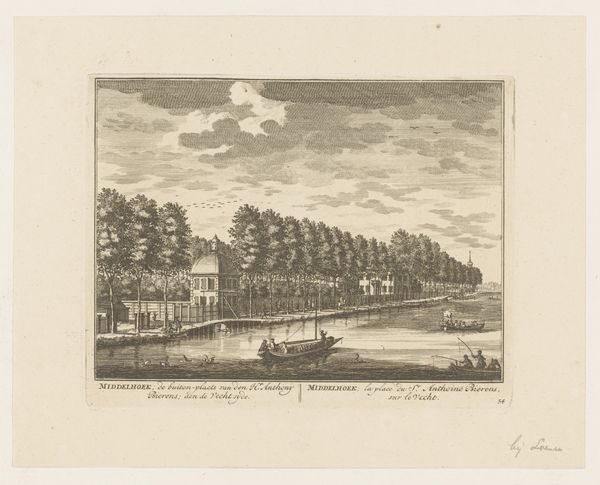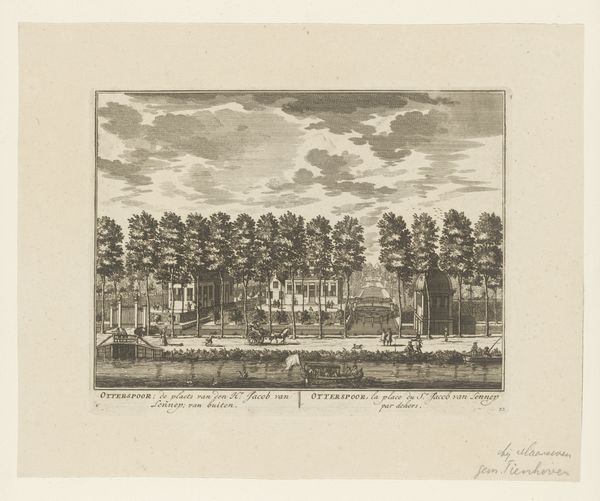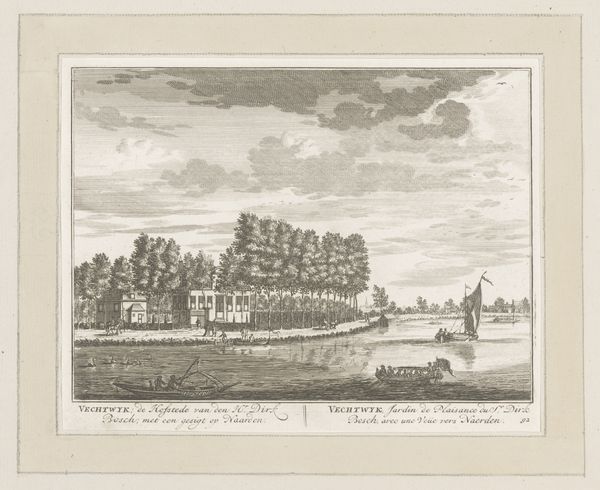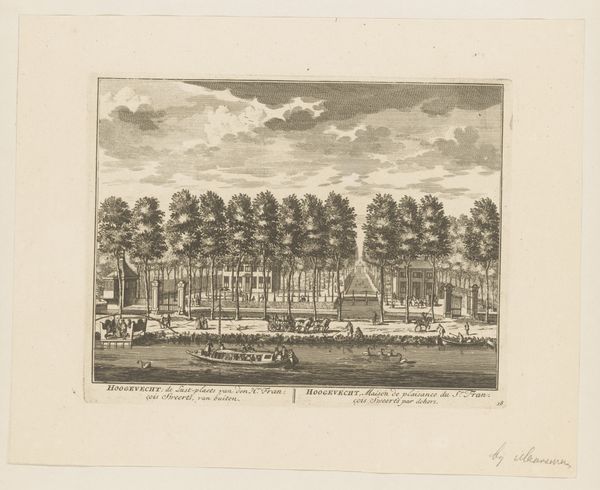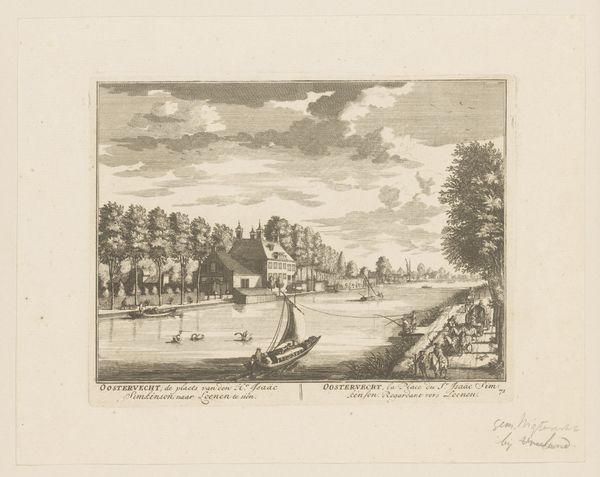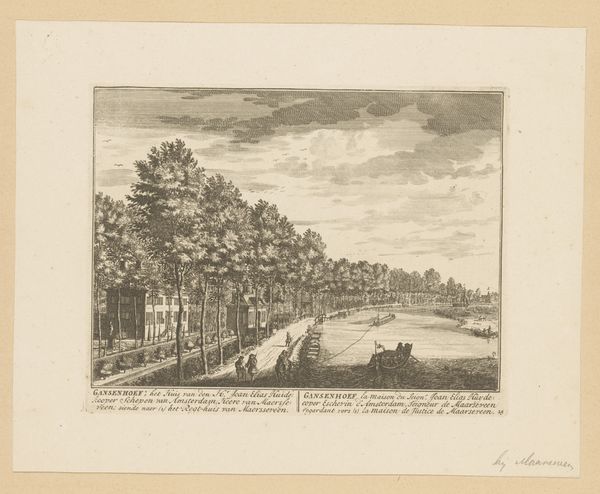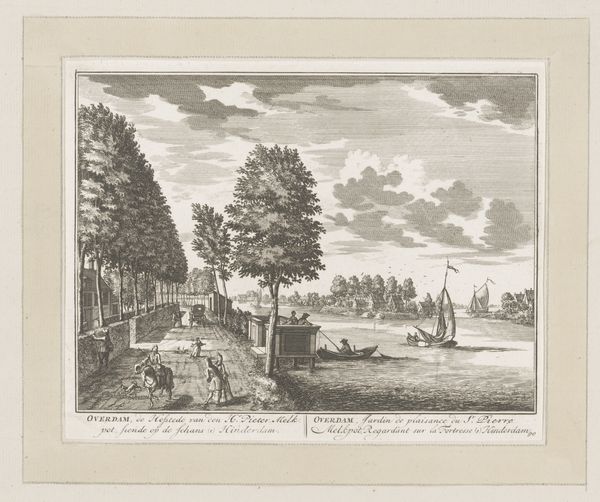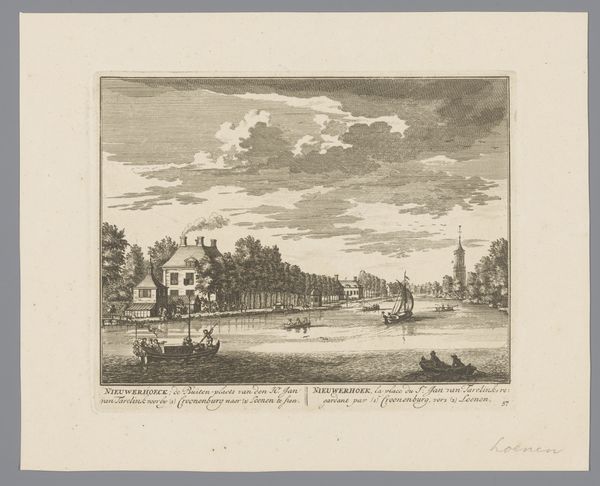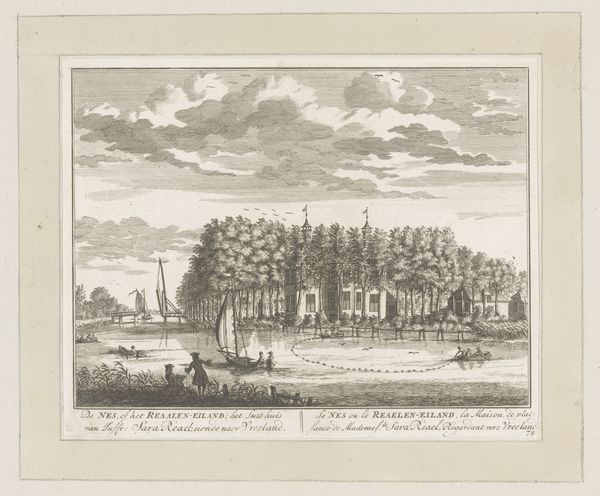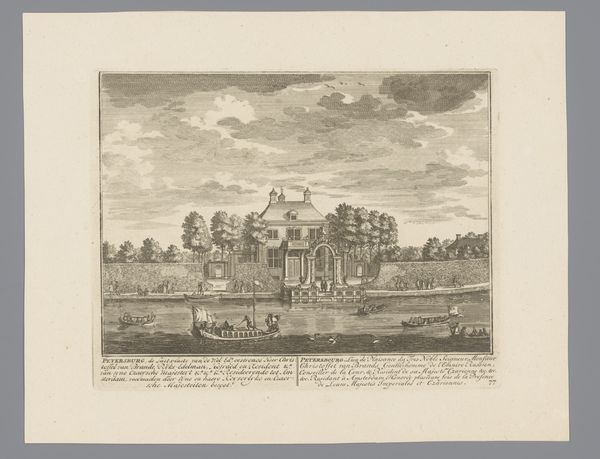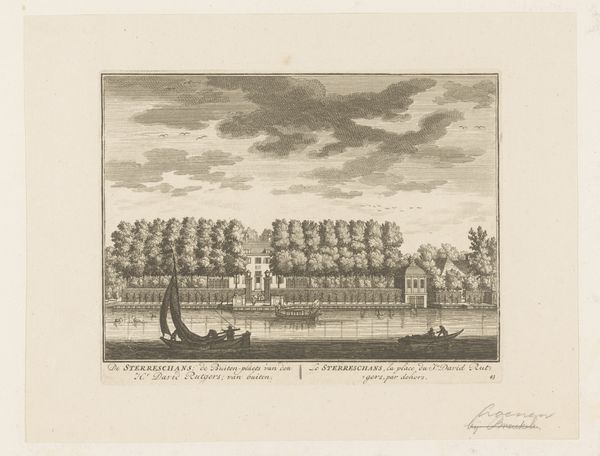
print, engraving
#
dutch-golden-age
# print
#
old engraving style
#
landscape
#
river
#
cityscape
#
engraving
Dimensions: height 160 mm, width 207 mm
Copyright: Rijks Museum: Open Domain
Editor: Here we have a print from 1719 titled "Gezicht op Ouderhoek aan de Vecht," by Daniël Stopendaal. It looks like a peaceful river scene. What do you see in this piece, considering the time it was made? Curator: This print offers a fascinating glimpse into the Dutch Golden Age and its values. Notice how precisely Stopendaal depicts the Ouderhoek estate. Such detailed depictions of country estates were popular then, not just as landscapes, but as status symbols. This image celebrates the wealth and order that the Dutch Republic had achieved through trade. Who do you think the engraving was made for? Editor: Well, I guess it's not something everyone could afford. It's quite elaborate. So, maybe for wealthy merchants or the landowners themselves to further propagate their standing? Curator: Exactly. These images were part of a larger visual culture reinforcing a certain social hierarchy. The owners could display these prints in their townhouses or gift them to associates, thereby expanding their sphere of influence and underscoring their prosperity and control over the landscape—both literally and figuratively. Does the symmetrical order seem important to you in that sense? Editor: Now that you mention it, the symmetry does give off a sense of control and balance. It’s almost like taming nature into something neat and presentable for society. Curator: Precisely. Stopendaal's "Gezicht op Ouderhoek aan de Vecht" is much more than just a pretty picture; it’s a document reflecting the political and social dynamics of its time. We should remember that prints like this played an active role in constructing and circulating those ideas. Editor: That's quite a thought. I was focused on the idyllic scene, but I see it holds so much more about the culture that produced it. Curator: Indeed, these serene images are actually asserting the owner's command over the land, which itself mirrors control over commerce and society at large. Looking closer helps unpack what that might mean, socially.
Comments
No comments
Be the first to comment and join the conversation on the ultimate creative platform.
